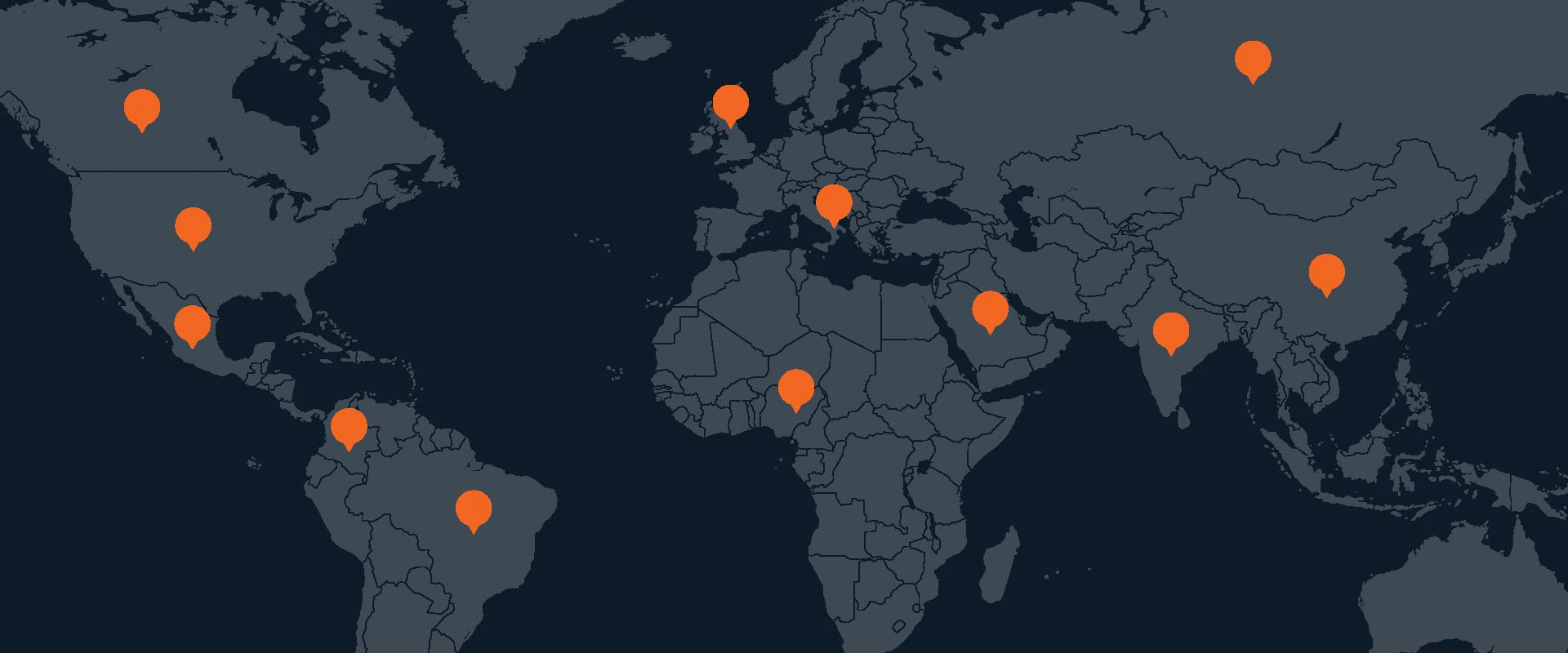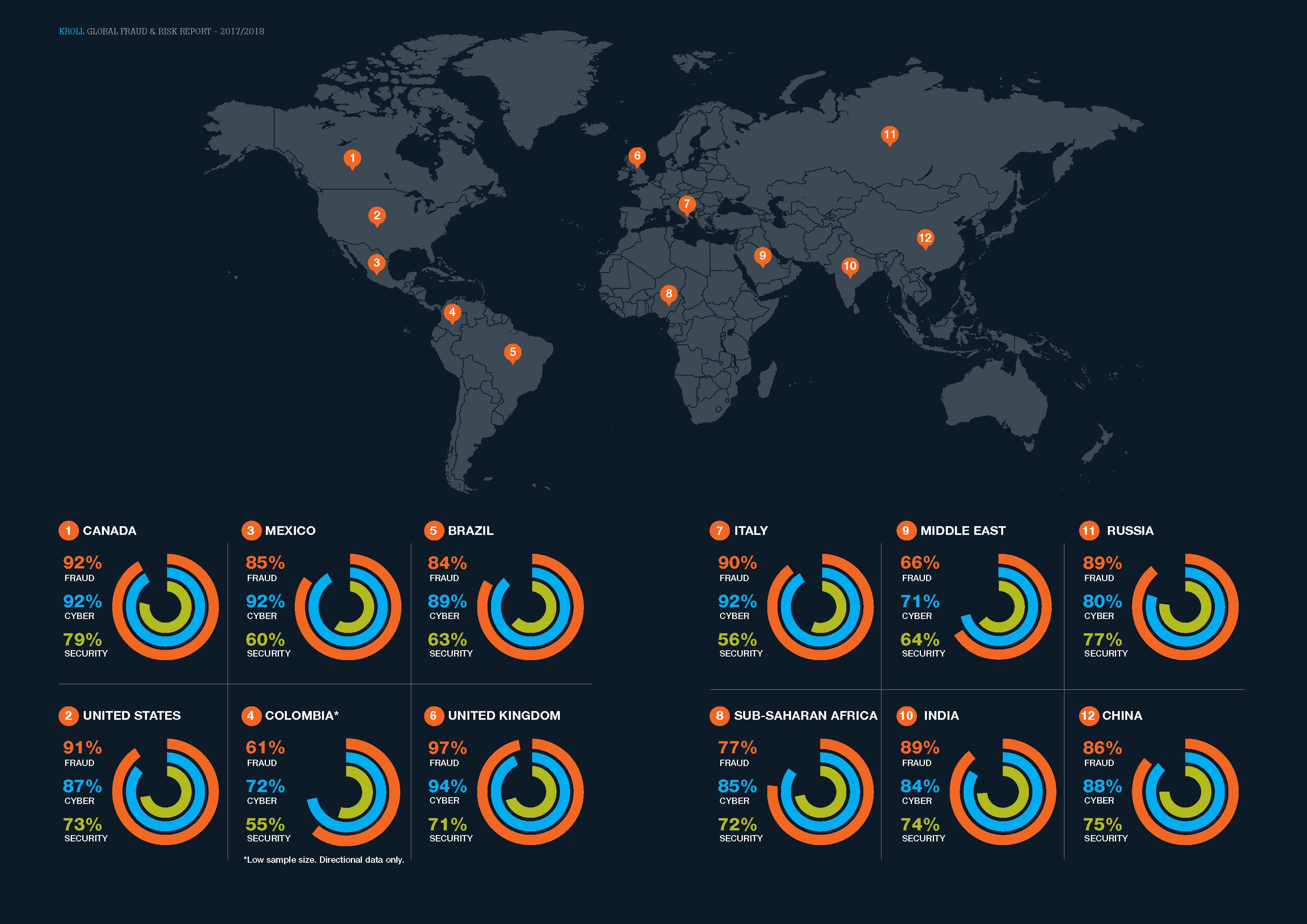
05 Oct The Global Risk Map 2018
There is clearly a broad consistency of experience across continents in relation to the impact of fraud, cyber security and security incidents, respectively, save for the Middle East where the respective figures for each are lower than for any other jurisdiction (aside from Colombia whose sample was too small to provide anything other than a broad indication of directional trends).
This suggests that either the pattern of illicit activity and/or the mitigation processes brought to bear might be instructive for other jurisdictions. However, the consistency of experience reinforces the fact that all three risk vectors have become extra-territorial as well as territorial in nature. The nature of the respective vector threats also indicates some interesting patterns of activity. Thus, for example, the leading cyber issues comprised software vulnerabilities and attacks on corporate websites, respectively, with employee error having a facilitating role as well as an attack upon a supplier or vendor also impacting negatively upon the organisation with whom they were commercially connected. In terms of security issues, the leading areas of concern were intellectual property infringement through counterfeit goods facilitated by joint cyber and physical intrusion into the organisation, and physical thefts. Unsurprisingly, given the complexity and volume of parts utilised within it, the manufacturing sector reported the highest levels of physical thefts and loss of intellectual property. In a world with global supply chains this pattern is likely to continue.
This is an insight extract curated and replicated from The Global Fraud & Risk Report 2017-2018

